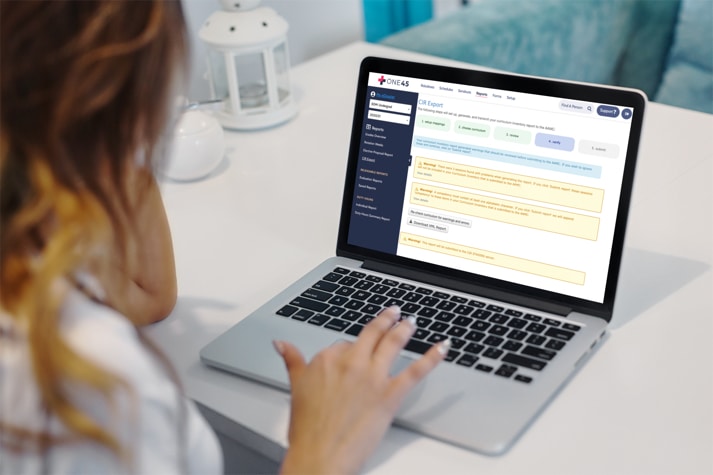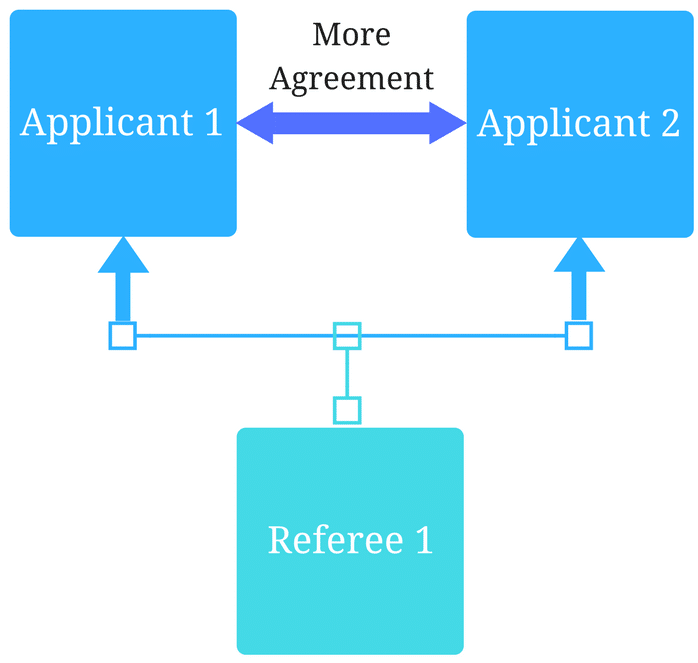First steps to curriculum inventory reporting for osteopathic medicine

April 21, 2021
The Association of American Medical Colleges (AAMC) and the American Association of Colleges of Osteopathic Medicine (AACOM) have joined together this year and opened the door to Osteopathic schools to report their curriculum to the AAMC Curriculum Inventory Report (CIR). Osteopathic schools are now working diligently on preparing their curriculum data for the CI. One of our osteopathic medicine customers contacted us recently to help work through changes they needed to make to be able to report, and we thought it would be beneficial to share with other osteopathic schools who are also hoping to report.
The initial questions were about: “content hours, best practices with using mapping objectives in the management tool, and making sure we’re on the right track in terms of cross-walking our tags to the PCRS tags.” With other institutions coming into reporting to the CIR again or for the first time, here is the advice we have shared with our osteopathic customers.
It’s important first to understand the context of the CIR and some of the data variables that report is looking for. The CI portal collects data entered into your Curriculum Structure on the following:
- Content Hours (Time)
- Mapping Objectives (Learning Objectives)
- Tagging Mapping lists (Instruction Methods, Assessment Methods, Resources and PCRS)
Our overview of the recommendations will follow the same pattern. Let’s look at Content Hours first:
Content Hours (Time)
Our customer success team first reviewed business rules around content hours. In order for Course(s) to appear on the CI report, it is important to make sure “time” has been entered. The majority of our specific customer’s courses and sessions had this information, so this step was really just a verification of the data.
- All courses must have start and end dates listed
- Session(s) need a duration of more than one minute or have at least one section
It is important to note that if you are representing sessions within your curriculum that are simple placeholders or may not have a specific date or time associated with the curriculum event, this can skew your curriculum content hours. Another example is a curriculum event or session that has multiple sections, such as a lab with multiple groups completing the same laboratory requirement on different dates and times. In this instance, it is important to populate the contact hours field with a number for accurate reporting.
Some other common tips on timing with content hours are to:
- Ensure the number-of-weeks detail is included for all courses and clerkships
- Always select a course type (don’t default to Other or it won’t be included in the report)
*Note: Weeks are reported as a number of days (e.g., one week equals five days). Num Weeks values entered with decimal places will be rounded to the closest whole number (e.g., 3.5 will be rounded up to 4, and 3.4 would be rounded down to 3).
Mapping Objectives (Learning Objectives)
We then moved on to discuss how and where learning objectives and mappings should live in the curriculum. Should mappings be attached directly to the course/session or to objectives? The recommendation is to map directly to learning objectives for more detailed reporting, however it is not mandatory in the CI to do so. Generally, we see instructional methods and assessment methods mapped with no objectives tied to them and other mappings attached directly to learning objectives. No matter where you add your mappings, it is important to show your Learning Objectives (goals) in your Curriculum Structure.
Here’s an example of how this looks for a particular course in action:

Tagging mapping lists (Instruction Methods, Assessment Methods, Resources and PCRS)
Lastly, we reviewed what mapping lists were mandatory and how to create a link between our osteopathic customer’s homegrown list(s) to the AAMC standardized mapping list. These include:
- instructional methods
- assessment Methods
- one or more school competency list(s) (Physician Competency Reference Set or PCRS)
- resource types mapping list (optional)
- keyword mapping list(s) (optional)
Instructional and assessment methods lists are mandatory to assign throughout your curriculum events for accurate CI reporting. Resource and keyword mapping lists are optional to set up. You are able to set up multiple internal mapping lists and link to one AAMC mapping list.
When it comes to the competency list, the AAMC has standardized mapping lists that they request you use in your curriculum or link to an appropriate similar mapping list of your own. For example, schools often have their own individual set of school competencies. The AAMC CI has a list called The Physician Competency Reference Set (PCRS), and it is required that you “link” your individualized set of objectives to this list.
As our customers are working towards wrapping up curriculum data readiness for the CI, we have made sure they are aware of the AAMC sandbox/staging test environment. Using the sandbox/staging test environment allows submission of the CI data to see what your verification report will look like. This allows you to run your data, see where you have gaps, and repeat and augment until you are satisfied with the outcome of your data.
The AAMC CI portal will open in August this year and close on October 21, 2021. Normally the portal closes at the end of September each year, however there has been an extension due to the many unforeseen curriculum changes due to COVID-19. There are many additional resources found at www.aamc.org/cir to help you with your curriculum inventory preparation as well.
For osteopathic schools that are able to report their data in the 2021 CIR season, there is an opportunity to add value by benchmark curriculum data against other MedEd institutions for the first time. This also offers the opportunity to explore deeper curriculum review for continuous quality improvement. It is exciting to support our osteopathic customers as they move towards these advantages.
Want to learn more about how Altus’ CIR offerings can help your school move ahead? Book a demo to have us show you more.
Related Articles

How interviews could be misleading your admissions...
Most schools consider the interview an important portion of their admissions process, hence a considerable…
Reference letters in academic admissions: useful o...
Because of the lack of innovation, there are often few opportunities to examine current legacy…
